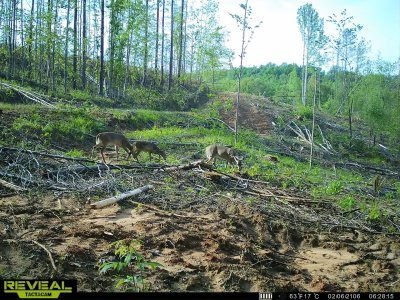In the 80’s and very early 90’s - I averaged killing over 150 quail per year. All of these birds came off commercial pine timberland - with the majority coming out of clearcut. At that same time, much of that same time, about two months out of the year, I was running a trapline - as were a lot of other folks. With three dozen traps, I would average maybe three coons a day. A couple years ago, when one of my grand daughters was six years old, we went out with a dozen dog proof traps. I set them, and she picked the spots, put them in the ground, and baited them. In two nights, we caught 14 coons and a possum.
I bring that up to say this - in the 70’s and 80’s - we had turkey, quail, and rabbits living just fine in marginal habitat. Cotton rats were so numerous they were a nuisance when working a young bird dog. Besides me, I know of no one else in my area that traps. I only do it to remove a few predators prior to nesting and fawning season. Good habitat no longer produces quail, rabbits, and turkeys. I have no cotton rats. I used to see dozens when bush hogging a two acre field. I dont have to put up any tree guards to prevent damage by mice, rats, or voles - I have never had a tree damaged by any of these animals - because there arent any. We have next to no snakes. I you are a ground nesting small animal - you dont exist here in any numbers.
I have what I consider to be decent habitat - but I dont have it at scale. I do have a few turkeys, but I am convinced if I quit hammering the coons and possums, they will go away. None of my neighbors have turkeys. The large large neighboring properties - 1000 to 1400 acres - are a beautiful even mix of rolling timber and Pasture. Unfortunately - this is cattle country and the farmers here plant fescue - they dont kill it. These folks are not going to up and convert their pasture to nwsg.
We have deer - and squirrels. I believe squirrels are able to make it because they nest in a hole in a tree. But if you are a ground nesting animal - you dont live here, anymore.
